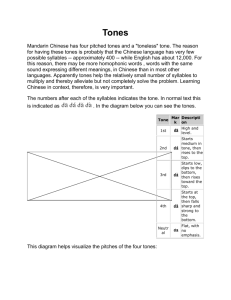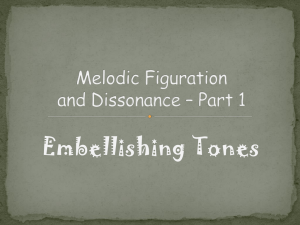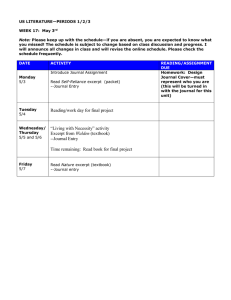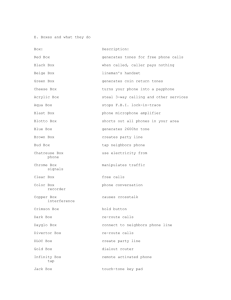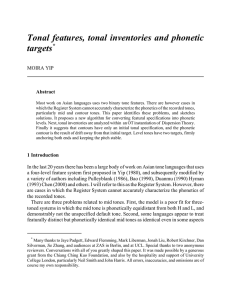Tones of Figuration: Introductory assignment
advertisement
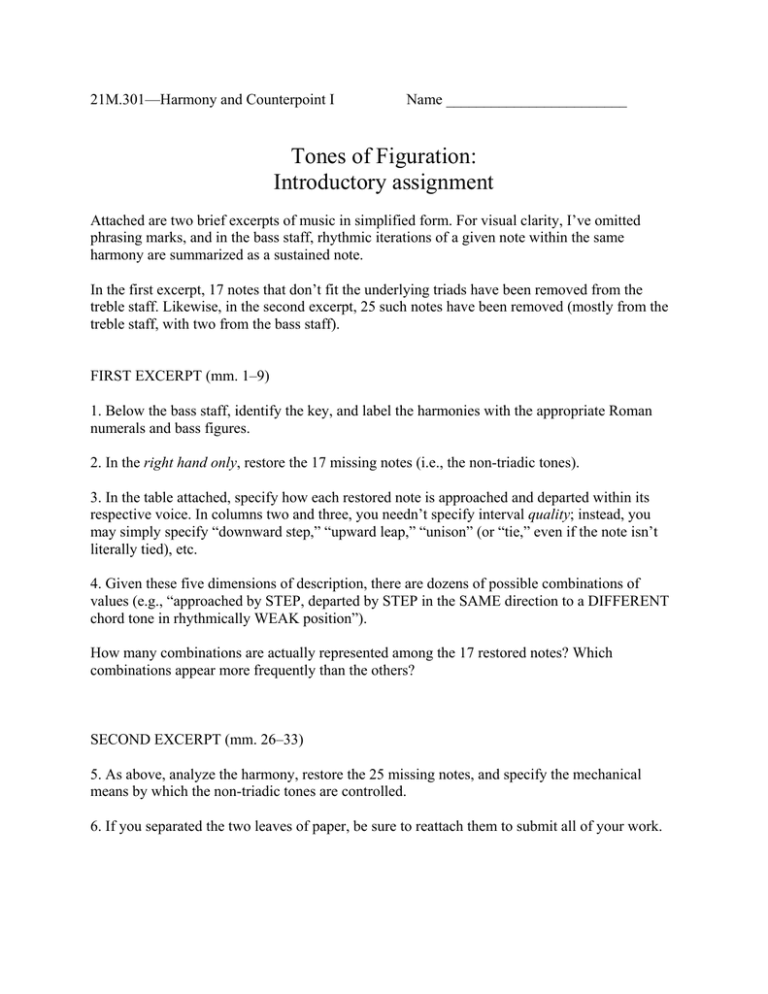
21M.301—Harmony and Counterpoint I Name ________________________ Tones of Figuration: Introductory assignment Attached are two brief excerpts of music in simplified form. For visual clarity, I’ve omitted phrasing marks, and in the bass staff, rhythmic iterations of a given note within the same harmony are summarized as a sustained note. In the first excerpt, 17 notes that don’t fit the underlying triads have been removed from the treble staff. Likewise, in the second excerpt, 25 such notes have been removed (mostly from the treble staff, with two from the bass staff). FIRST EXCERPT (mm. 1–9) 1. Below the bass staff, identify the key, and label the harmonies with the appropriate Roman numerals and bass figures. 2. In the right hand only, restore the 17 missing notes (i.e., the non-triadic tones). 3. In the table attached, specify how each restored note is approached and departed within its respective voice. In columns two and three, you needn’t specify interval quality; instead, you may simply specify “downward step,” “upward leap,” “unison” (or “tie,” even if the note isn’t literally tied), etc. 4. Given these five dimensions of description, there are dozens of possible combinations of values (e.g., “approached by STEP, departed by STEP in the SAME direction to a DIFFERENT chord tone in rhythmically WEAK position”). How many combinations are actually represented among the 17 restored notes? Which combinations appear more frequently than the others? SECOND EXCERPT (mm. 26–33) 5. As above, analyze the harmony, restore the 25 missing notes, and specify the mechanical means by which the non-triadic tones are controlled. 6. If you separated the two leaves of paper, be sure to reattach them to submit all of your work. First excerpt (introduction) index 1 2 3 4 5 6 7 8 9 10 11 12 13 14 15 16 17 From its preceding triadic tone, approached by… (direction, interval) and departed by… (direction, interval) to the next triadic tone. directions of motion: same, or different? connected chord tones: same tone, or different tones? rhythmic placement: strong, or weak? Second excerpt (reh. 31) index 1 2 3 4 5 6 7 8 9 10 11 12 13 14 15 16 17 18 19 20 21 22 23 24 25 From its preceding triadic tone, approached by… (direction, interval) and departed by… (direction, interval) to the next triadic tone. directions of motion: same, or different? connected chord tones: same tone, or different tones? rhythmic placement: strong, or weak? 21M.301—Harmony and Counterpoint I—Figuration [Allegro] 9 10 1 11 13 4 7 5 6 6 6 2 14 8 12 1 4 3 viio4 [Reh. 31] 5 2 Name _____________________________ 15 7 9 16 11 10 12 17 8 3 13 14 15 16 17 18 20 19 21 22 23 24 25
